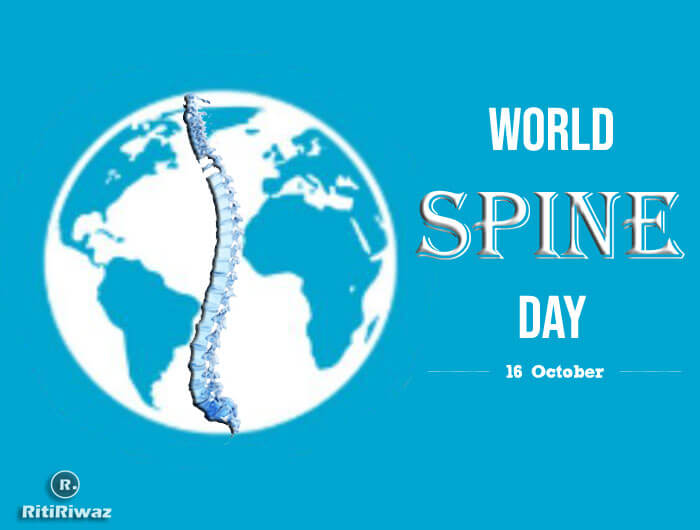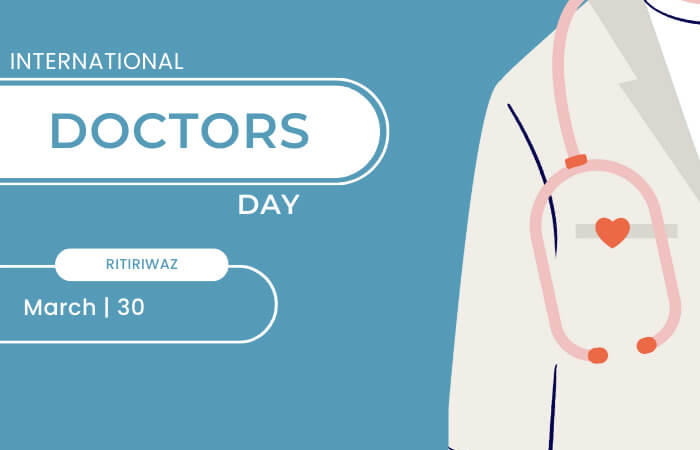World Spine Day

World Spine Day is observed on 16 October and it’s a great time to remind everyone about the importance of spinal health on your overall wellbeing. Spinal pain and disability can have a profound effect on a person’s overall health, sometimes preventing them from working or even doing simple daily activities
With health professionals, exercise and rehabilitation experts, public health advocates, schoolchildren, and patients all taking part, World Spine Day will be celebrated on every continent. The aims to recognize that spinal pain is part of the ‘global burden of disease’ and that many under-served communities lack access, or worse, have no access to quality spinal care.
World Spine Day is an initiative of the World Federation of Chiropractic and each year it has a theme for 2021 that will be BACK 2 BACK! The theme reflects the need to reset and refocus on spinal pain and disability as part of the global burden of disease. BACK2BACK will focus attention on spinal pain and disability at home, in the workplace, in schools, and in our communities.
History of World Spine Day
World Spine Day has been celebrated on October 16th since 2012. The day was named by the World Federation of Chiropractic to raise awareness/work on prevention and management of spinal conditions. Every year a particular theme is selected to focus on spine health. The first World Spine Day theme in 2012 was “Straighten Up and Move.”
The Bone and Joint Decade was formally launched at the World Health Organization (WHO) headquarters in Geneva, Switzerland, on January 13, 2000, following its endorsement by the United Nations on November 30, 1999. In 2010 the global Bone and Joint Decade (BJD) was extended to 2010-2020. The BJD initiative set out to raise awareness regarding the increasing incidence of musculoskeletal (MSK) conditions and reduce the impact of musculoskeletal conditions across the globe. The strength of the BJD comes from its worldwide network, supported by more than a thousand national and international professional, scientific, and patient organizations
Effect of COVID-19
The coronavirus pandemic has resulted in lockdown measures that have restricted people’s ability to undertake physical activity and keep mobile. Working from home has become one of the biggest hallmarks of the COVID-19 pandemic, and has led to increased reports of back and neck pain. The biggest thing for people at home to do would be to set their monitor at an appropriate height. It should really be when you’re looking straight as opposed to looking down, or even up at the monitor. It is also recommended to take a break and standing up about every 20 minutes or so coupled with the frequent stretching of your back and neck as you work to help cut down on aches and pains.
Set a timer to remind yourself to get up once an hour to:
- Stretch and walk around
- Bend over and touch your toes
- Do some jumping jacks
- Run in place
- Roll your shoulders slowly
- Do arm circles to get your blood flowing
Some of the options that you should consider to avoid back-pain
-
Exercising: It can be as little as fidgeting at your workspace (every little bit helps), or as big as committing to a regular exercise routine. We’re not evolutionarily designed to function well at a standstill – so don’t stand still (for too long).
-
You are what you eat (and drink): Eating well provides good building blocks for your body to build and rebuild healthy bones, muscles, and cells. Maintaining a healthy weight makes it easier to function in your environment. An adequate water intake means your discs are plump, your joints well lubricated, and intra/extra-cellular processes functioning well.
-
Lifting Properly: We need to make sure we’re not hurting ourselves with the lifting, moving, building. Keep work and lifted objects close to your body (remember studying about levers in school?), bend at the knees, not the back, and ‘keep your nose between your toes’ i.e. twist by moving your feet in a circle, not your back.
-
Sleep well: Sleep on a mattress of medium firmness, avoid tummy-sleeping, and set yourself up for good-quality rest by developing a relaxation/mind-clearing routine before you drift off (I list gratitudes as the last thing before sleep to ensure my brain’s dwelling on sweetness rather than stress through the night).
-
Mind your posture: Whether it’s driving, sitting at a desk, or standing in line… check-in… aim for ears over shoulders, shoulders over hips, and hips over ankles (that one’s for standing, obviously, you’d look pretty silly sitting like that).
When your spine hurts, it affects almost everything from depression to sleep problems and can damage the quality of your life. So take care.
Suggested Read: Important Days In October






